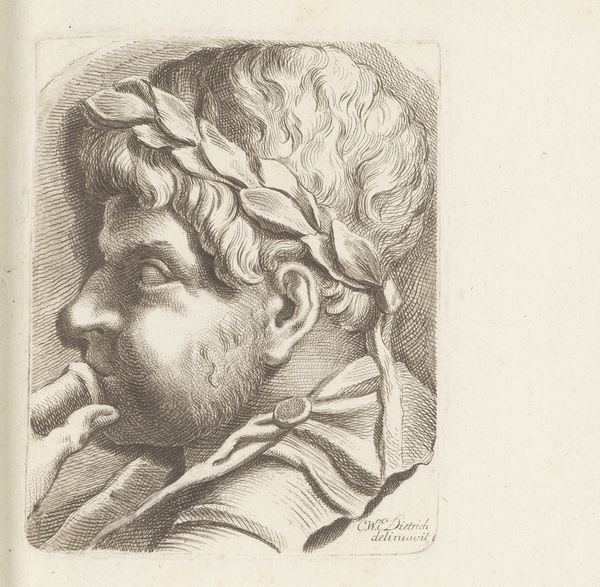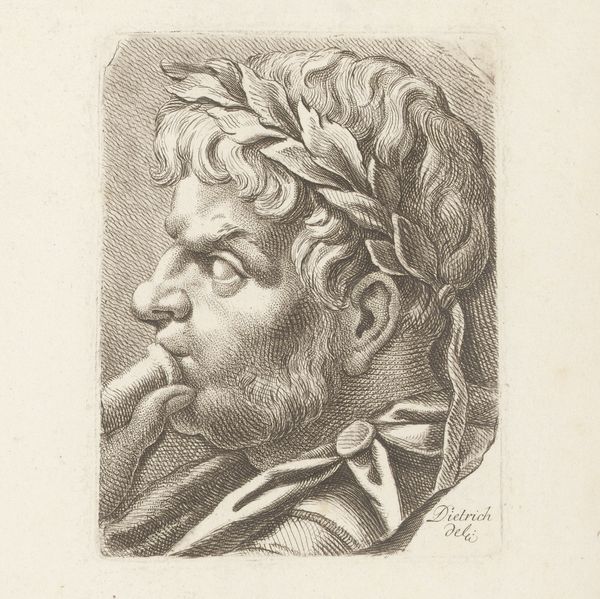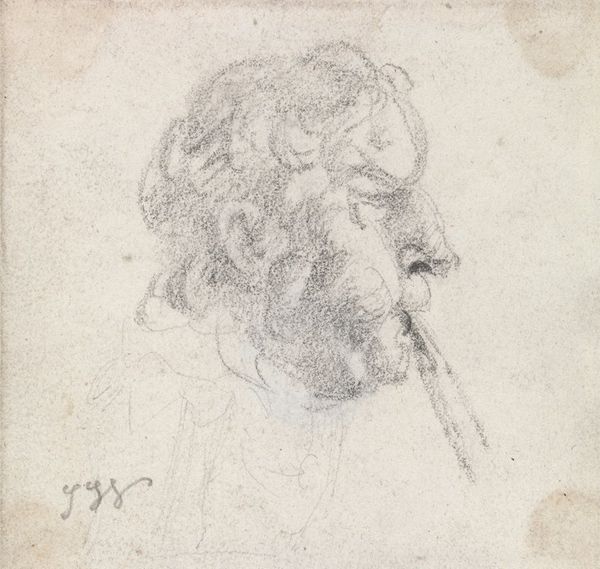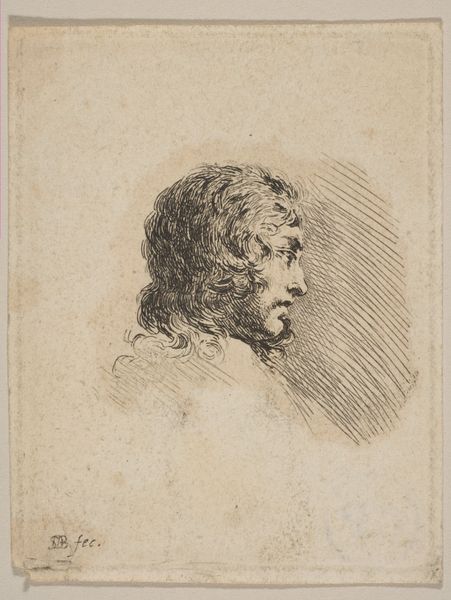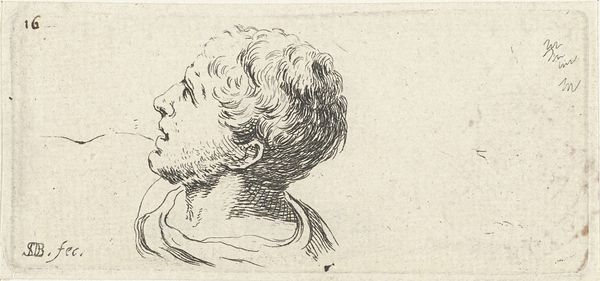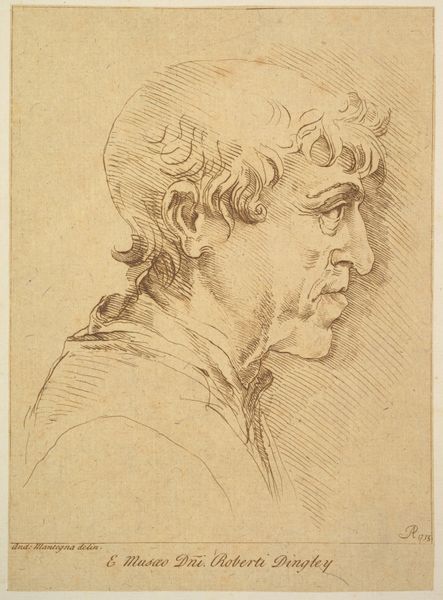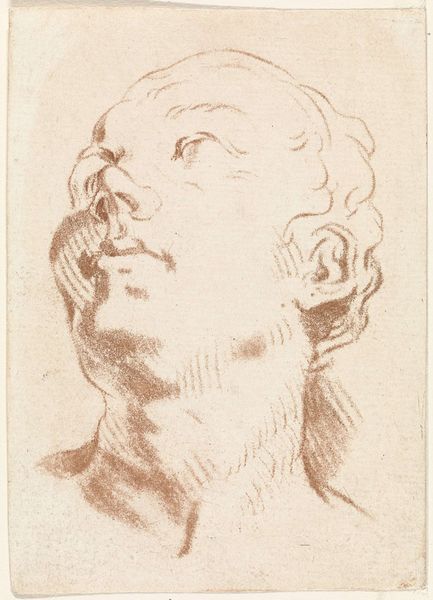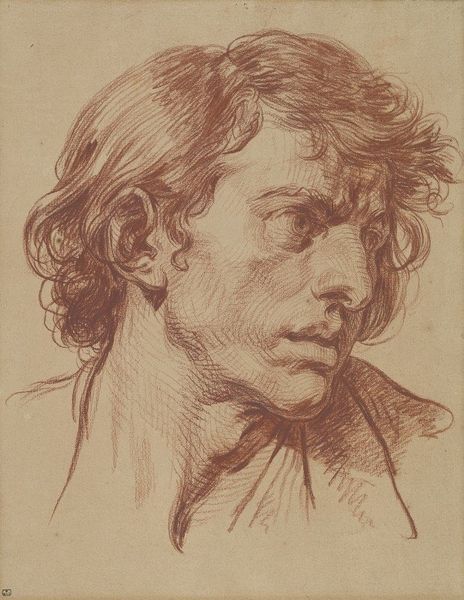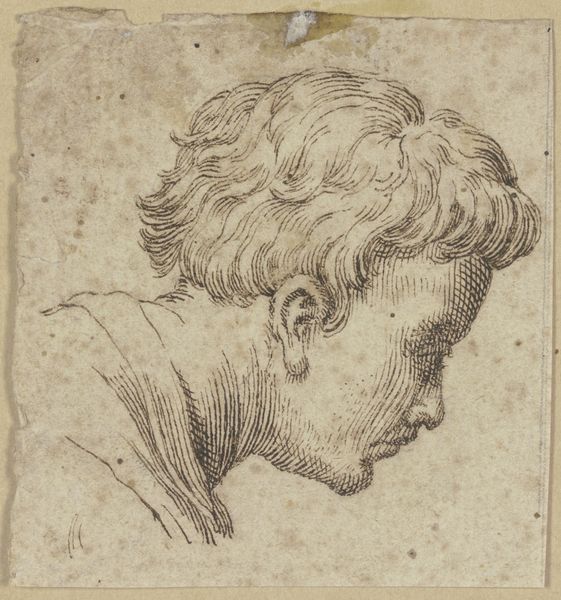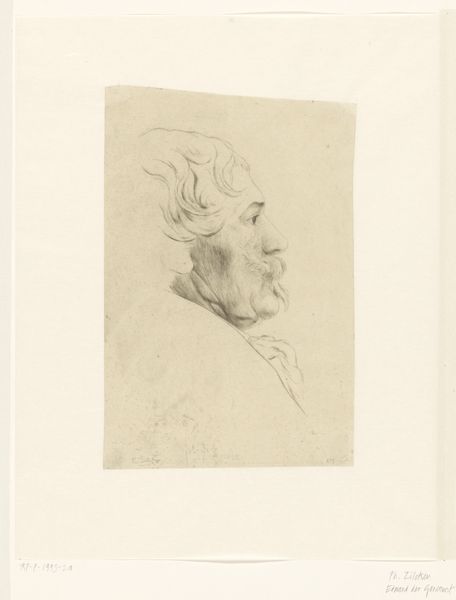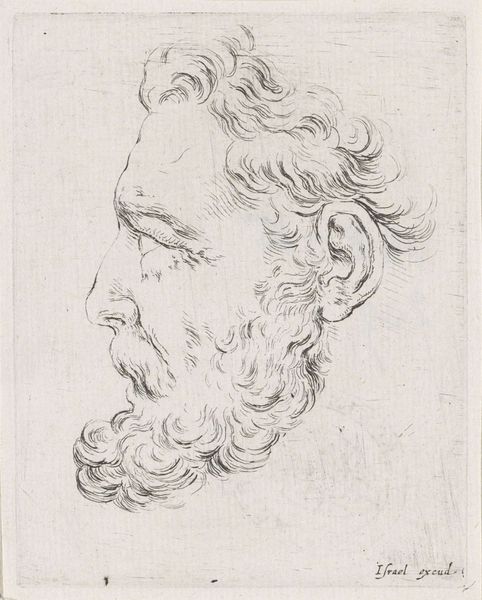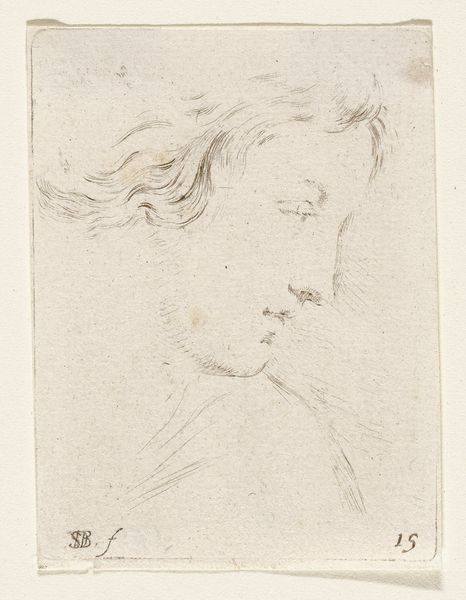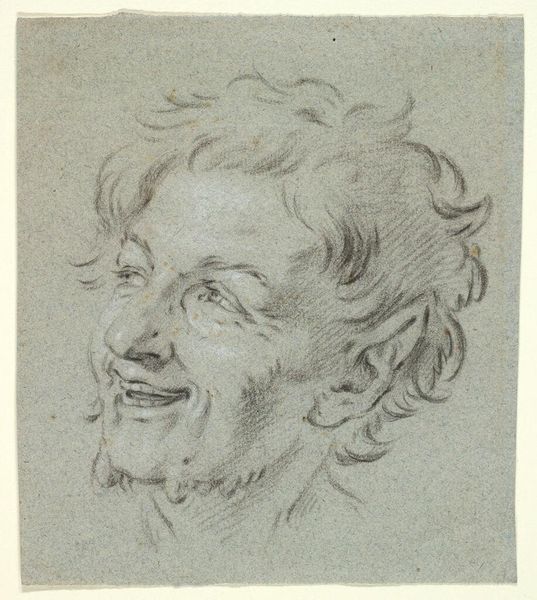
drawing, print, pencil
#
portrait
#
drawing
#
baroque
# print
#
etching
#
pencil drawing
#
pencil
#
history-painting
#
academic-art
Dimensions: 8 3/4 x 6 7/8in. (22.2 x 17.5cm)
Copyright: Public Domain
Curator: The work before us, "Drawing for 'La Colonne Trajane,'" dating from about 1715 to 1770, comes from the hand of François Boucher. Executed in pencil, this preliminary sketch now resides at the Metropolitan Museum of Art. What are your first impressions? Editor: Immediately, I'm struck by the subject's air of mischievous determination, wouldn't you say? He's like a cherubic Roman emperor, almost comically serious. It has an unfinished, playful spirit. Curator: It certainly contrasts sharply with the grandeur of Trajan's Column itself. The materiality here is also revealing. Boucher's use of pencil as a medium for a historical subject underscores a shift. Consider that he created it not as a finished product, but a step toward printmaking. Editor: The column—replicated as a popular print! It transforms a grand symbol of empire into accessible commodity... something rather delicious about that irony, no? Imagine it tacked up in a Parisian print shop, alongside bawdier engravings... Curator: Exactly. Furthermore, we must consider the economic accessibility facilitated by the reproductive process itself, as well as that column reproductions were not without its imperial intent. It also democratizes art, offering access to imagery for a broader segment of society, while simultaneously reasserting hierarchical structures. Editor: All right, but put aside commerce for a moment! Can’t you see how beautifully the laurel wreath frames that fleshy little face? A subtle wink to classical sculpture, softened by Boucher's Rococo sensibility. Curator: Certainly. Boucher navigates between established academic traditions and the burgeoning trends of his era, blurring the lines between these worlds by creating images to be mass-produced, enjoyed and consumed in diverse social strata. The art is as much in the reproduction as it is in the initial creation. Editor: So true, so true! It also puts a clever little question mark upon notions of authorship and value in art history... almost a proto-Duchamp! It leaves me wondering who truly gets to claim Trajan's Column after this cheeky rendition. Curator: A fascinating angle. Looking at the column’s legacy from an era defined by both aristocracy and revolution, and seeing this drawing as both document and departure from those themes… that resonates profoundly. Editor: And, if nothing else, it confirms my long held theory that even the loftiest subjects benefit from a little dose of chubby-cheeked wit. Thank you, Boucher!
Comments
No comments
Be the first to comment and join the conversation on the ultimate creative platform.
